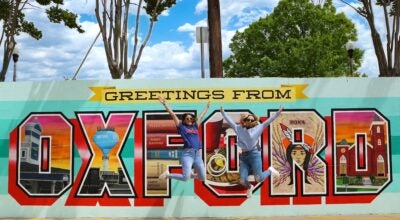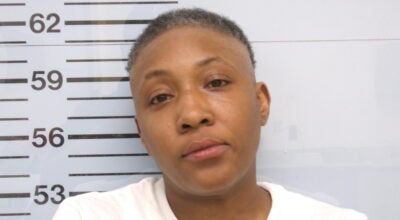Ole Miss Chancellor’s letter on Advisory Committee on History and Context Final Report
Published 10:06 am Thursday, July 6, 2017
As we complete our celebration of our nation’s birthday, I am writing to update the University of Mississippi community about another important milestone: the conclusion of the work of the Chancellor’s Advisory Committee on History and Context (CACHC).
In this letter, I will provide information on the CACHC’s final report and recommendations, the university’s leadership decision to accept all the committee’s recommendations related to their charge, the identification of two additional potential projects (involving recognition of the sacrifice of the University Greys and the acknowledgment of both Confederate and African American men who fought in the Civil War), and an explanation why some of the additional recommendations beyond the scope of the committee’s charge will not be undertaken.
I would first like to convey my profound thanks to the members of the committee for their hard work over the past academic year on this challenging, but very important task for our university. As Mississippi’s flagship university, we have long been committed to honest and open dialogue about our history. The work of the CACHC represents that commitment in action — informed by expertise and conducted with respectful candor.
As important as today’s destination is, the journey that brought us here is noteworthy. I committed early on as chancellor to the tenets of 2014 Action Plan — a comprehensive set of recommendations related to campus environment — and I established the CACHC to address Recommendation 5 of the action plan, which urged the university to “offer more history, putting the past into context” and to do so “without attempts to erase history, even some difficult history.” (2014 Action Plan, page 3)
The CACHC embodies this approach of contextualization in its final report, recognizing that while our history is by no means all that we are, it remains an important part of who we are:
“Contextualizing the campus reminds us of the enormity and complexity of our shared past. Done correctly, and therefore carefully, contextualization is an additive process, not a subtractive one. The past merits scrutiny, even as it commands respect. Such an engagement with our collective past seeks to clarify, not to obscure. But while facing the past with humility, contextualization calls for honesty on behalf of all who will in the future develop their own relationships with the University. Contextualization therefore looks backward and forward simultaneously, working toward a just and faithful balance between humility and honesty. Those who undertake such work must be mindful of being stewards, transmitting an imperfect knowledge of the past to the imagined understanding of the future.” (CACHC Final Report, page 4)
Background
I first announced the formation of the CACHC in my March 29, 2016 letter to the community, after which members of the senior leadership team and I met with several groups of students, faculty, staff, and alumni in April and May 2016 to hear their input as to the desired criteria for CACHC membership. During these meetings, it was recommended that membership be focused primarily upon faculty subject matter experts and include as well deep understanding of the UM community and culture, experience in commemorating historical sites, ability to build consensus, and a commitment to the principles of the UM Creed. Across the board, all input we received emphasized how important it was that the process be academically- and fact-focused and not be a political process.
As a result of this clear and consistent input, I sent a letter on June 10, 2016 that, along with updating the community about contextualization of the Confederate statue and overall progress on the 2014 Action Plan, also announced membership criteria for the CACHC, launched the nomination process, and listed the committee’s two-phase objectives:
- The initial task of the CACHC will be to recommend which additional physical sites on the Oxford campus (beyond those already completed) should be contextualized, so as to explain the environment in which they were created or named. Potential additional sites include
- monuments;
- buildings (for example, Vardaman Hall, Johnson Commons, and Lamar Hall);
- street names;
- Once the recommendations have been reviewed by the Chancellor’s office and the list of sites is finalized, the committee will proceed with designing content and format to contextualize the designated sites.
From June 10 through June 30, 2016, we accepted nominations for CACHC membership through an online submission form on the newly established context.OleMiss.edu website. We received nearly 100 nominations. In my July 28, 2016, letter to the university community, I announced the 14 committee members.
I am appreciative that the members of the CACHC embraced my guiding principles of open communication and transparency. From the outset when the CACHC received my charge to the committee on August 16, 2016, the committee members have sought to listen and engage in constructive conversations with all university stakeholders — students, faculty, staff, alumni and friends — so that they weighed all relevant information. The CACHC sponsored extensive opportunities for broad community input through online forms for both Phase I and Phase II, a dedicated CACHC email address (context@OleMiss.edu), as well as two Phase II listening sessions in March 2017. This approach was the best of both worlds: a committee of experts on the one hand and input from a wide variety of sources on the other — allowing the committee to create substantiated explanations of how various sites of interest on campus were created or named.
At the conclusion of Phase I and upon review with the university leadership, I accepted the following Phase I recommendations, which were incorporated into my Phase II charge to the committee. Among its Phase I recommendations, the CACHC recommended two actions involving naming or clarification:
- Rename Vardaman Hall through University processes that require IHL approval;
- Clarify that Johnson Commons is named after Paul B. Johnson Sr., to be accomplished by adding “Sr.” to the building name.
The CACHC also recommended contextualization of the following monuments, buildings, or street names:
- Lamar Hall;
- Barnard Observatory;
- Longstreet Hall;
- George Hall;
- Barnard Observatory, Croft Hall, the Lyceum, and Hilgard Cut — plaque to be placed just west of Croft, within site of the first three buildings, noting that these four projects were all constructed with slave labor.
Final Report of the CACHC
I am pleased to share the final report of the CACHC, which includes the content and format of the contextualizations for the sites listed above.
While the approach was focused on contextualization, there was one site (Vardaman Hall) that the committee recommended renaming. Using the guidelines developed by the Committee to Establish Principles on Renaming at Yale University, the CACHC cautiously and sensitively approached the difficult process of deciding whether to rename or just contextualize Vardaman Hall. The committee found that James K. Vardaman was an exceptional case for his time because he was an individual who “actively promoted some morally odious practice, or dedicated much of [his life] to upholding that practice.” (CACHC Final Report, page 11) This recommendation is timely since Vardaman Hall has already been approved by the IHL in May 2016 for substantial renovation, an event which typically results in consideration of renaming. When the fundraising and renovation are complete in a couple of years, we will seek IHL approval for an appropriate renaming.
In addition to the physical sites listed in the Phase II charge, the committee’s final report in Section B put forth two additional sites of university history for contextualization:
- Stained-glass windows in Ventress Hall, for which the committee recommended adding a plaque dedicated to the sacrifice of the University Greys;
- Confederate Cemetery and related Memorial, for which the committee recommended adding individual gravestones to recognize the sacrifice of each person known to be buried there as well as a marker in an appropriate location to recognize the men from Lafayette County who served in the Civil War in the U.S. Colored Troops.
These two additional sites were not included in the original Phase II charge and therefore were not formally open to public input. To reinforce the importance of community engagement and input, I am seeking public input via an online submission form prior to taking any action related to these items. The public review and comment period will be open starting today for the remainder of the month of July 2017. I encourage you to carefully and thoughtfully consider the proposed recommendations in Section B of the Final Report and provide your feedback. In the past year, the product of the CACHC has been enriched and informed by the hundreds of individuals who provided input in person, through participation in the online web forms, and through individual letters, emails, and calls. I am confident that our decisions with regard to these two items will be equally enhanced by public input.
Going Forward
I want to share our next steps as the committee has concluded its work and we complete the contextualization projects. First, I look forward to receiving public input via the online submission form for the two additional sites not included in the Phase II charge. Next, I will task the Division of University Relations and the Division of Diversity and Community Engagement with implementation, oversight, and coordination of the actions described above, including funding, timeline for the ordering and installation of plaques and markers, and recommendation of the appropriate process for recognition of the installation.
Finally, I appreciate the committee’s thought and energy that went into Section C, consisting of nine additional recommendations relating to the process for implementing contextualization efforts and enhancement of the university’s overall endeavors related to preservation and dissemination of its history. The first recommendation related to dissemination of the report has been accomplished by this letter, and the second recommendation of recognizing the installation of the plaques will be part of the implementation.
The other seven recommendations, while thoughtful, are beyond the charge of the CACHC and are more naturally part of the ongoing inquiry and study conducted at UM by faculty, staff, and students through our academic departments and schools, the Slavery Research Group, the Center for the Study of Southern Culture, the Center for Civil War Research, and the Center for Inclusion and Cross Cultural Engagement, among others. Although the university is not adopting the final seven Section C recommendations, we will ensure that they are made known to relevant units within the university.
As the work of the CACHC has concluded and our formal contextualization process draws to a close, I want to commend our university community for staying engaged and supportive. The passion and love for our extraordinary university was evident at every step. I also reiterate my tremendous respect and appreciation for the diligent work of the members of the CACHC.
Over the past year, the Ole Miss family has engaged in profoundly important dialogue to more fully understand and articulate our historical truths — so that we can learn from that past and chart a bold course forward for our great flagship university and all those we serve. Being a flagship university is far more than a slogan: It is a calling and a commitment to transform lives, communities, and the world. Even when our views differ on issues of vital importance to Ole Miss, Mississippi, and the nation, we remain inextricably bound together by our belief in the university’s ability to positively transform lives, just as it has changed many of our own lives for the better. Thank you for your continued support and participation in our flagship mission.
Sincerely,
Jeffrey S. Vitter
Chancellor and Distinguished Professor





